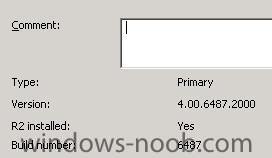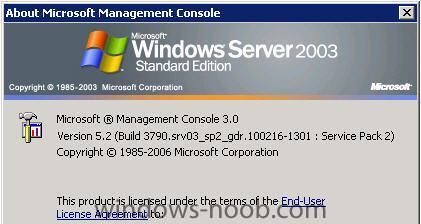
asterismW
Established Members-
Posts
8 -
Joined
-
Last visited
Profile Information
-
Gender
Female
asterismW's Achievements
Newbie (1/14)
0
Reputation
-
Well, after lots of searching, I found a solution, though I'm sure it's not the "right" solution. I'll post it here, in case it helps anyone. I did some more digging and found this post. In it, Kerwin Medina posted: This is easier said than done. When SCCM creates stand-alone media, it creates an ISO file. You need 3rd party software to open and edit ISO's. I used UltraISO*. I opened the ISO in UltraISO and browsed to SMS/DATA and copied TSMBootStrap.ini to my desktop. I then deleted the file from the ISO, edited the desktop copy, and copied it back. (For whatever reason, I couldn't simply edit the file from the ISO. The changes wouldn't keep.) I then saved the ISO and burned it to a disk. It worked! I put the disk in the computer and it kicked off the task sequence without any user intervention. It's an ineligant solution, and I had to buy software, but it worked. If you know how it's supposed to be done, I'd love to hear from you. *I'm not sure I can recommend UltraISO to anyone. It's great software, but I still haven't received my registration code, several hours after purchasing it. Apparently this is a big problem; their forum is littered with people complaining about not receiving their registration code. I found and used another code someone posted online, which I figured was ok since I had purchased it.
-
Hi, I'm very new at SCCM and OSD, so please forgive me if this is a really simple question, but I can't find an answer anywhere. I have a stand-alone disk for my OS image deployment (so I'm not connected to the SCCM server at all). It works, but I'm trying to figure out how to get the Task Sequence Wizard to launch automatically. Currently I have to click Next and then Next again to start it. I need it to run without any user intervention. I've browsed Google and this forum, but haven't found anything specific. I have a vague notion that I need to use customsettings.ini and bootstrap.ini, but I don't even know where those files are, much less how I need to modify them to automate the process. Another idea I've come across is task sequence variables, but I don't know anything about those either. Any help would be much appreciated, thanks.
-
I know this thread is super old, but I thought I'd post my solution anyway, in case it helps anyone. I had this same problem after we went to a virtual SCCM server running Server 2008. When I tried to add the OS images I had previously created, I got that error. The server was not a domain controller. The shared network folder where I stored the .wim's was on another server. The Everyone group had full access on the share permissions, but only admins had access through NTFS permissions. Long story short, I had to grant the SCCM computer account Read rights to the share. Even though I was logged into the SCCM server with my admin account, it was still using the local computer account to access the share. According to a book another admin had, “All source file locations must be accessible to the Configuration Manager's computer account.” I don't really understand this, since I don't believe our old SCCM server had rights to the share, but FWIW, this is what worked for me.
-
how can i determine which version of SCCM 2007 is installed
asterismW replied to anyweb's topic in Configuration Manager 2007
Ah, I understand now. When you first said "console", I thought you were talking about the Microsoft Management Console. I didn't know that the site Properties were different than the SCCM Properties. Thanks for clearing that up. -
how can i determine which version of SCCM 2007 is installed
asterismW replied to anyweb's topic in Configuration Manager 2007
Sure. Here's Help -> About SCCM: Here's when I right click the site and click Properties: And here's Help -> About MMC: -
how can i determine which version of SCCM 2007 is installed
asterismW replied to anyweb's topic in Configuration Manager 2007
Well, it's a virtual server which I remote into using Remote Desktop, but I open the console directly from the server. When I go to Help -> About MMC, it says I'm running version 5.2, SP2. I don't think it's a big deal though, so I won't worry about it. Thanks for your response. -
This is a fairly straightforward question arising from a fairly complicated situation. The question is this: Do I need to configure WDS in Server 2003 when using SCCM 2007 for OS Deployment? The situation is this: I'm trying to deploy Windows 7 through SCCM 2007 on a Server 2003 server. I have a Microsoft book that I'm trying to follow, but all the examples use Server 2008. I have the deployment package all ready to go. When I PXE boot the client, it finds the server, but then just sits there, waiting for a response. I installed WDS, but I didn't configure it, because in the book it said, "Once WDS is installed, all configuration settings take place from within Configuration Manager 2007. You do not configure any WDS settings from within the Windows Deployment Services console." However, I don't know if that applies to Server 2003 as well. And if I do have to configure it, will I run into problems since our DHCP server is on a different subnet? (I was hoping to avoid those problems by using SCCM for the deployment, rather than just using WDS.) I've never done OS deployments before, and I'm kind of learning on the fly. Any help you can give is greatly appreciated.
-
how can i determine which version of SCCM 2007 is installed
asterismW replied to anyweb's topic in Configuration Manager 2007
What does it mean if the version number from the Help box is different than the version number from the Properties box? If I go to Help -> About SCCM, it tells me I have SP1. If I right click my site and click Properties, it tells me I have R2 SP2 (which is what it should be, as we just upgraded last week).




